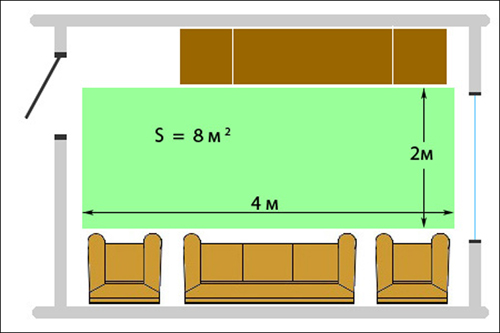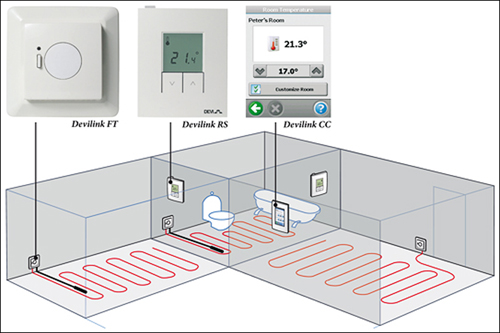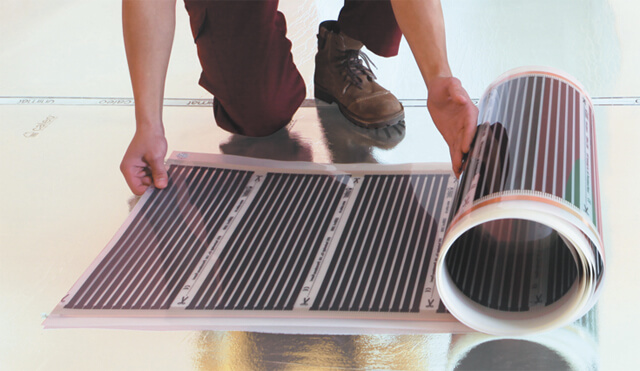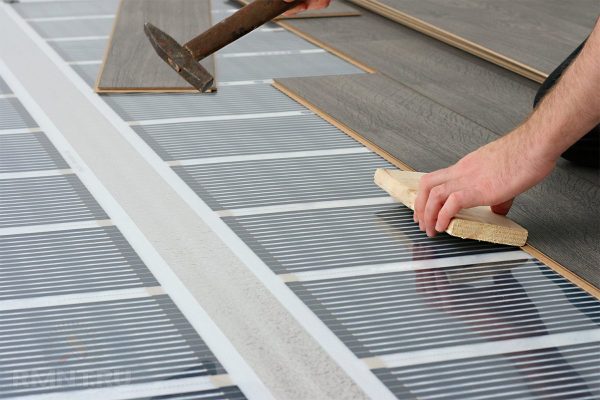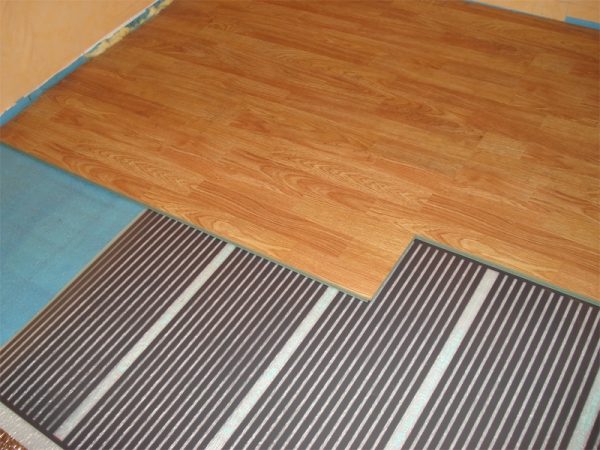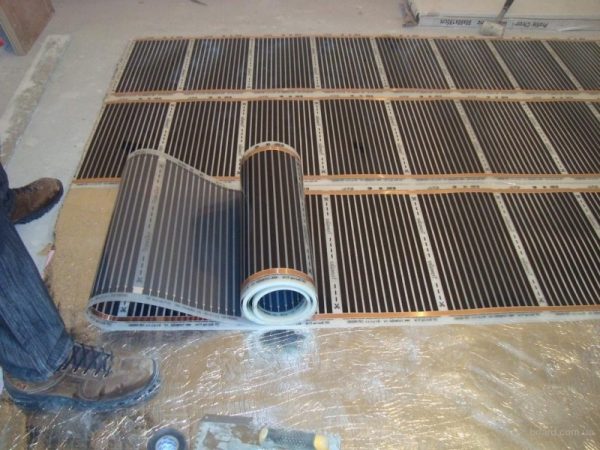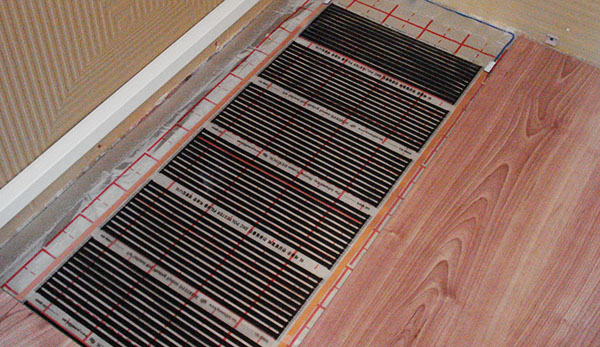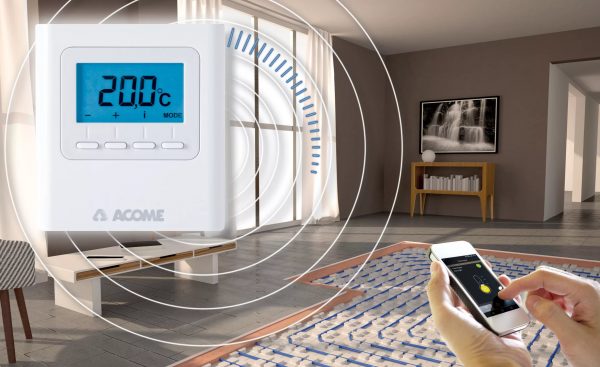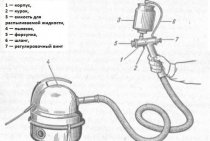How to calculate electricity consumption
To independently determine how much energy an electric underfloor heating consumes, you must use the following formula:
W=S*P*0.4, where
S is the area of the room;
P is the power of the system;
0.4 is a coefficient that takes into account how much of the floor surface in the room is covered with cable / film. In other words, 0.4*S is the usable heating area.
Suppose, for example, we need to calculate the electricity consumption of an electric floor heating with a power of 150 W / m2 in a living room with an area of 25 m2.
Then our formula will look like this:
W=25*150*0.4=1500 W, which means consumption of 1.5 kW per hour.
So, we know the hourly consumption is known, but that's still far from everything.
As a rule, the heating system operates 8-9 hours a day, when all residents are at home. In total, the cost of electricity per day will be approximately 12-13.5 kilowatts. It turns out that the monthly electricity consumption of the "warm floor" will be about 360-400 kW.
Let's take into account that the above calculations are very rough, and the actual consumption is 2 times less. This is due to the fact that it is necessary to install thermostats that save electricity by about 40%. . Next, we multiply the power that the system consumes per month by the cost of one kilowatt of energy at the time of calculation
In total, we get the finished energy consumption of the system, on the basis of which it is possible to analyze whether such heating is beneficial or not
Next, we multiply the power that the system consumes per month by the cost of one kilowatt of energy at the time of calculation. In total, we get the finished energy consumption of the system, on the basis of which it is possible to analyze whether such heating is beneficial or not.
The calculation formula is quite simple. Using this technology, you can easily calculate the energy consumption of a warm floor in any room: bedroom, kitchen, bathroom and even on the balcony, the main thing is to have a calculator at hand!
We saw how much electricity a warm floor consumes. If you make a calculation for all rooms, then a decent amount "for the light" will come out. Of course, when paying the first receipt, you will think about how you can reduce costs and make economical heating system.
However, we will give some tips that will significantly reduce the electricity consumption of underfloor heating in the house:
1. Take care of high-quality insulation at home. Experimentally, it was determined that good thermal insulation reduces energy consumption by 35-40%.
2. Be sure to mount the thermostat on the wall at the coldest point in the room. Thus, the heating will turn on when the temperature drops below the set temperature, and, conversely, turn off when the room is sufficiently heated. Temperature controllers, as we have already said, can reduce up to 40% of electricity consumed.
3. Install a multi-tariff electricity meter in the house, at which the electricity tariff at night is 1.5-2 times less (depending on the region). Anyway, the electric floor heating will work in your presence, and this is just in the evening when you come home from work. So why pay more?
4. Lay the material only on the usable area. It is not necessary to install under furniture and household appliances, it is not advisable from the point of view of reducing consumption and, moreover, is prohibited by the manufacturers of heating materials themselves.
5. You can sacrifice a little heating by lowering the temperature in the room by just 1 degree. With a small donation, you can save up to 5% on your electric underfloor heating!
Watch a video on this topic:
Methodology for calculating electricity consumption
You can determine how much energy a warm floor consumes in one simple way. To do this, any extraneous electrical appliances in the room, whether they are radiators, convectors or heaters, must be turned off. That is, the entire volume of electricity consumed will fall exclusively on the warm floor.
The advantage of this method is also that it allows you to determine the amount of energy that will be required to heat the room only with a system of underfloor heating, without additional heating devices.
It is also noteworthy that at different stages of operation, the power consumption of a warm floor will vary, therefore, the amount of energy consumed will also differ. The maximum load level falls at the moment of switching on, when the full power of the floor is required to heat it up (read: "How to calculate the power of a warm floor - theory and practice").
Electric matte underfloor heating
Underfloor heating of this type is an affordable way to heat a room, which has already been tested by a large number of people. There is nothing complicated in the design of an electric underfloor heating, it contains a thermostat, a temperature sensor and a heating cable.
The heating element can be single-core and two-core. They are almost the same, the only difference is that they need a different gasket. For the operation of a two-core one, you need to connect only one side to the mains, and a single-core one from two. That is why a twin-core is more convenient, more profitable and costs more.
As for the cable diameter, it can be from two to ten millimeters, while the power always remains the same. The cable diameter is selected depending on the selected type of screed.
Sometimes an electric underfloor heating looks like a regular cable, and sometimes it looks like a grid with a cable attached to it. It is this mesh base with cable that is called the “matte” floor. Such a floor is the most popular, as it makes it possible to evenly distribute heat throughout the floor. Unfortunately, the “matte” warm floor is only suitable for a thin screed.
Cover the warm floor with almost any coating. Before buying a material, you need to clarify the possibility of using this coating for electric underfloor heating. It must be remembered that if a thick carpet is placed on the floor, which does not transmit heat well, then the presence of a warm floor in the room will simply be meaningless.
Power level
There are only three types of warm floors:
- cable;
- infrared rod;
- infrared film.
Each of the types has a number of characteristic features that can affect the electricity consumption of a warm floor.
Power
Can include:
- consumption level of the heating cable itself. The indicator can be from 120 watts to 2,000 watts. The step of laying the cable of the system will directly depend on this;
- heating temperature is one of the main indicators. The maximum temperature of the underfloor heating film is 56°C. For the rod, this figure is 60 ° C. For cable underfloor heating 65°C. On average, the operating temperature is set to 35°C;
- the greater the resistance coefficient, the higher the flow;
- IR systems consume from 65 to 155 W per square meter of surface;
- IR floor consumes 130-170 W per square meter;
- The more powerful the underfloor heating system, the higher the electrical power consumption will be.
Calculating the average cost is very simple. The average figure is 120 watts per square meter of floor space. Based on practical observations, the use of infrared floor is considered more beneficial.
Opportunity to reduce costs
In some cases, it may seem that the calculation is not very pleasant. Laying the floor itself is not only expensive, but further operation is not entirely unprofitable.However, there are certain rules and actions that will help reduce the cost of electricity bills.
1
It is important not only to have a good heating device inside the house, but it is also important to make high-quality insulation of the house outside. If we talk about specific numbers, then heating may require 30-40% less electricity if the house is really well insulated
In this case, we can talk about savings by about a third.
2. Be sure to install the underfloor heating system, make sure that the thermostat is installed. In this case, we can talk about not constantly turning on the system, but only when the temperature needs to be increased. If again we talk about specific numbers, then the thermostat helps to reduce costs by about 30%.
3. In some regions, there is such a thing as a night and day rate. When installing a warm floor in such a region, the meter should definitely be replaced. Heating the room with the help of the floor at night, it is possible to significantly reduce costs.
4. Laying a warm floor system is exactly where it is needed. Thus, in those places where the furniture or the room where, and so, the heating system is not required. The absence of a warm floor will help save on electricity.
5. In the event that you reduce the air temperature in the room by only 1 degree, it is possible to reduce energy consumption by as much as 5%. Most likely 1 degree and will not be very noticeable to others.
